
Mid-Range Family Sedans
Family cars went through enormous changes in the 1940s. Separate wings, running boards, and stand-up headlamps were out, and modern, full-width styling was in. Inspiration came from the design leaders in the US auto industry, which meant car companies across Europe increasingly used chrome trim and innovated with man-made materials. Underneath, these cars varied a lot as each manufacturer aimed to produce cars best-suited to its home market. Toughness and reliability were common aims, but while some concentrated on low cost others opted for comfortable ride quality, or nimble handling.
Peugeot 203, 1948
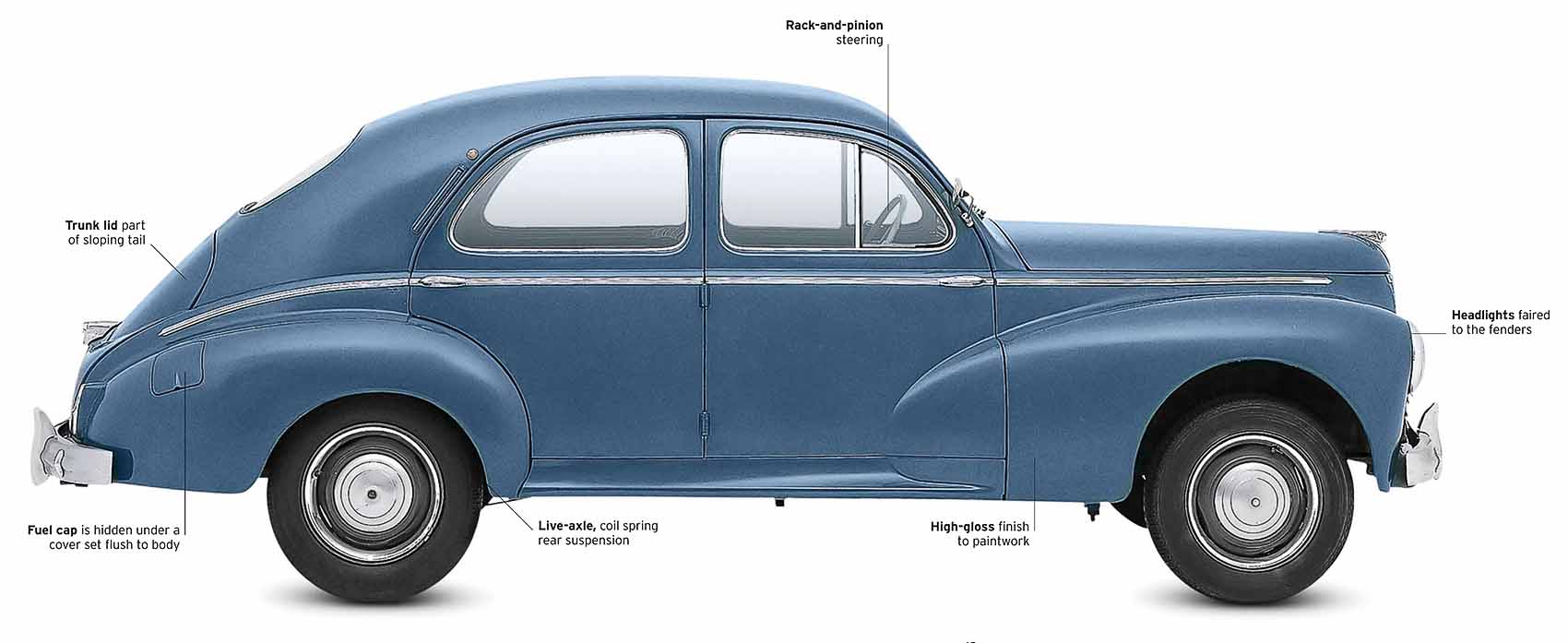
| Origin | France |
| Engine | 1,290 cc, straight-four |
| Top speed | 73 mph (118 km/h) |
The 203 was state-of-the-art. The tough monocoque body had been wind-tunnel tested to reduce drag, and the fluid suspension could smooth out the bumpiest of roads. The engine had an aluminium cylinder head with overhead valves and hemispherical combustion chambers. Almost 700,000 were sold by 1960.
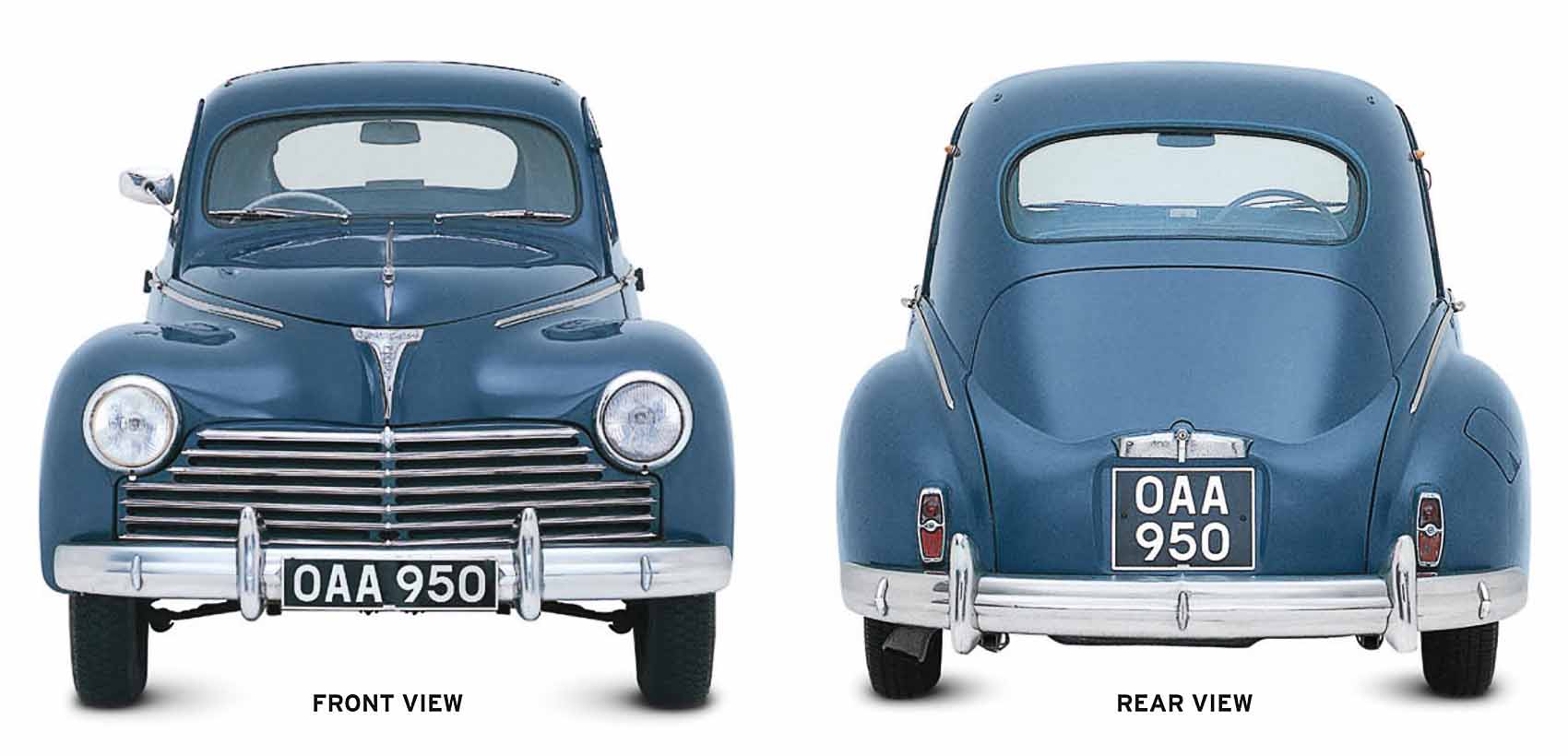
Period styling
Many of the 203’s design elements were typical of saloons of the era. Its headlights, which were incorporated into the bodywork not mounted externally, were just such an example.
Slender but spacious
Although tapered, the rear end of the 203 nonetheless included a wide-opening boot. It had large bumpers but absurdly small light clusters by today’s standards.
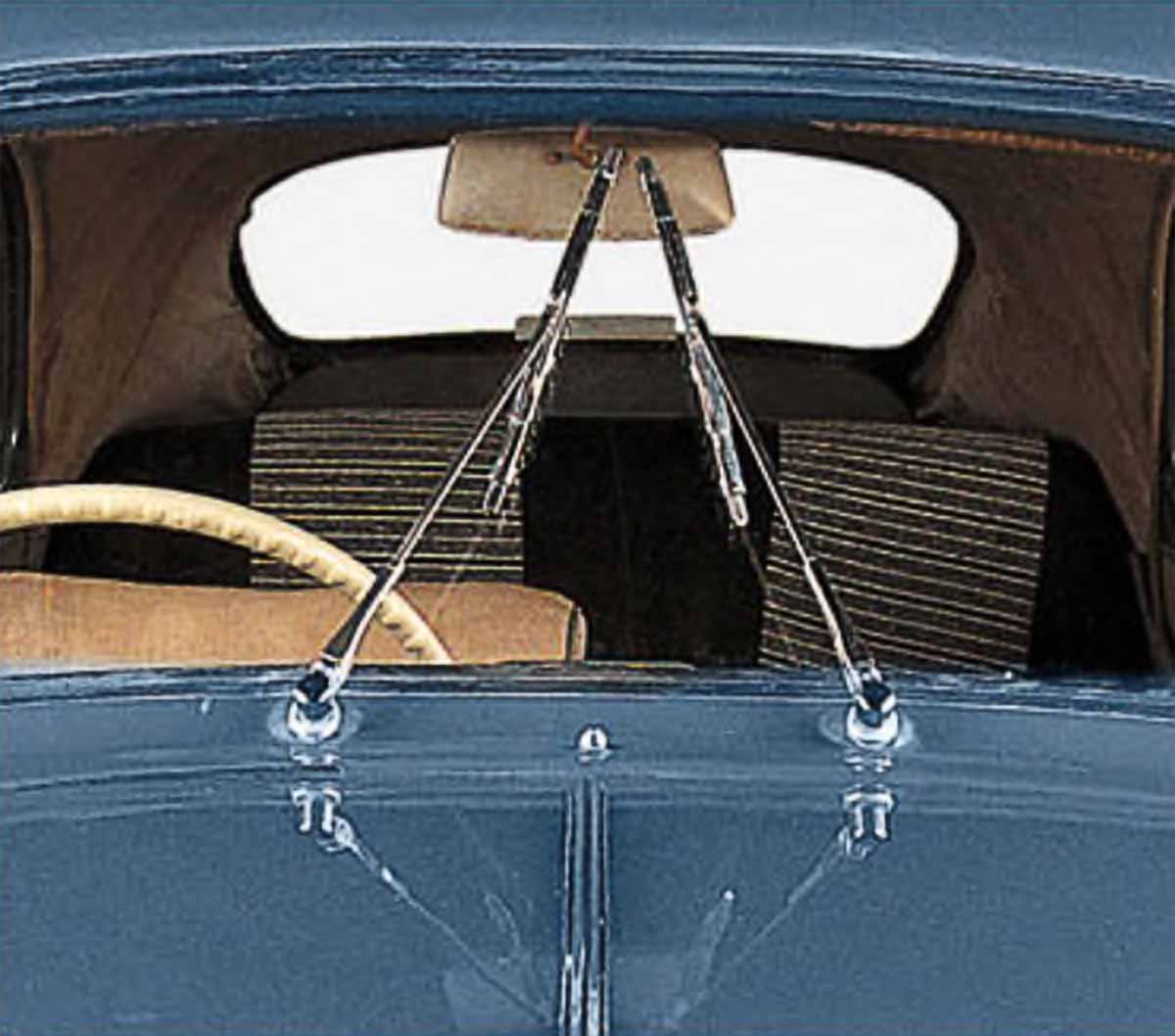
Simple saloon
The interior of the 203 was simple and straightforward. Initially, the speedometer was centrally mounted in the painted metal dashboard, but later in 1952 it was moved in front of the driver, when quarter lights were also added to the front doors and the rear window was enlarged. The front seats were moved to fill the entire width of the cabin and the gear lever was on the steering column.
Triumph 1800, 1946
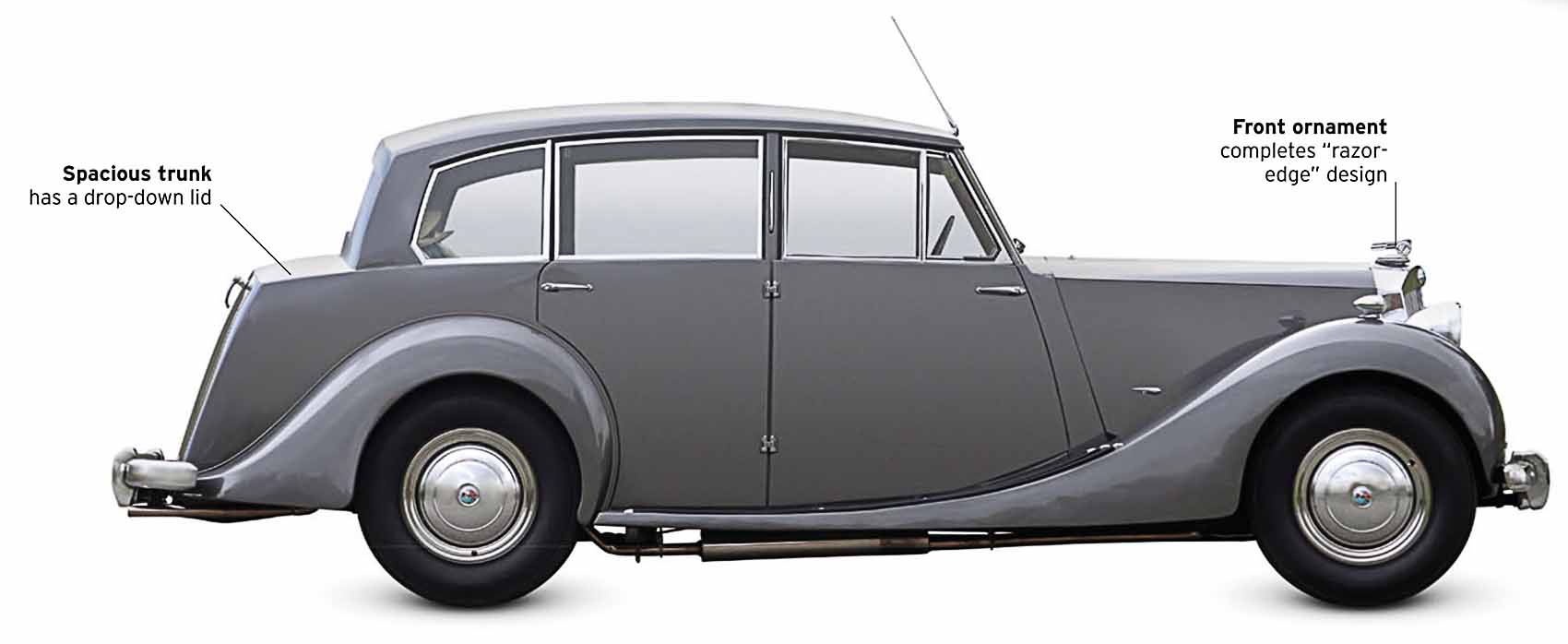
| Origin | UK |
| Engine | 1,776 cc, straight-four |
| Top speed | 75 mph (121 km/h) |
Standard bought Triumph in 1945, and relaunched it as an upmarket marque with sharp styling by Mulliners of Birmingham. The engine was enlarged to 2,088 cc in 1949, and a new chassis introduced when the model became the Triumph Renown in 1950. Production lasted until 1954.
Volvo PV444, 1947
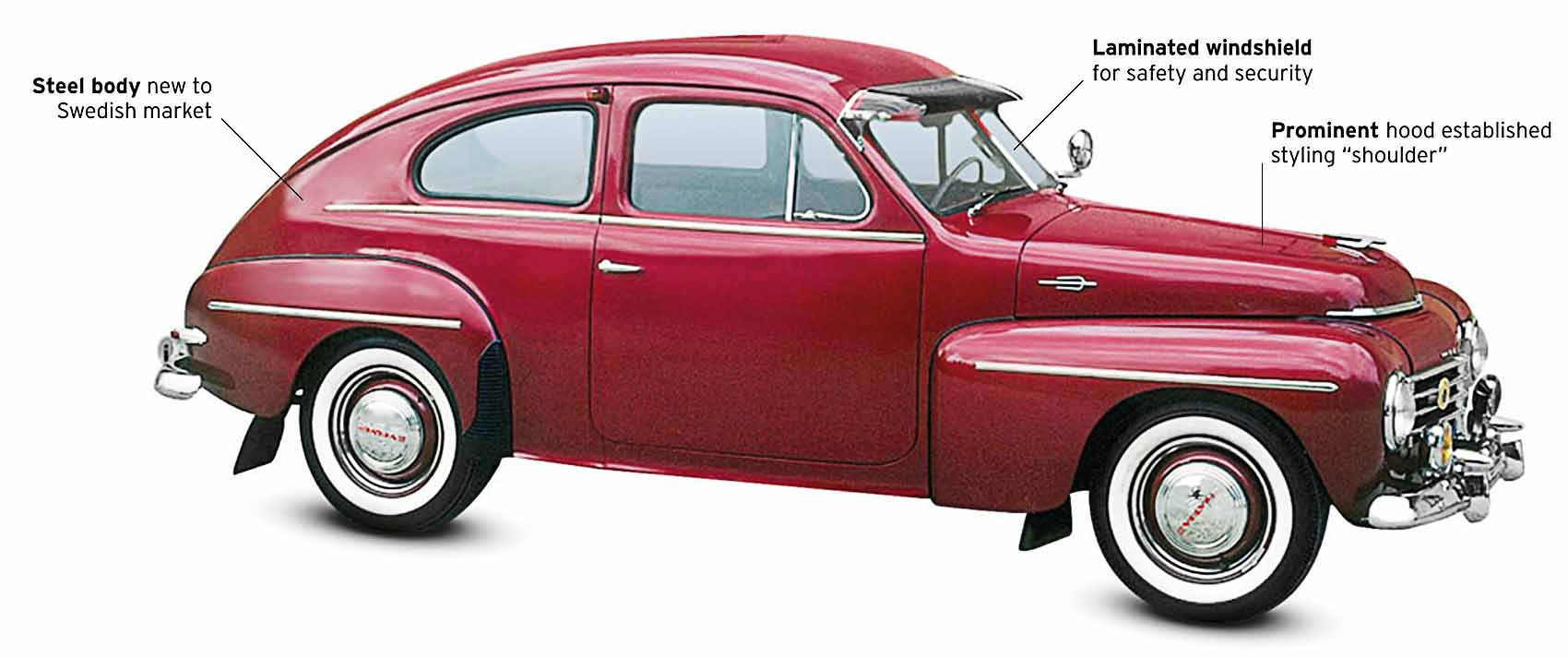
| Origin | Sweden |
| Engine | 1,414 cc, straight-four |
| Top speed | 76 mph (122 km/h) |
With a monocoque body and a new overhead-valve engine, the Volvo was ahead of its time. The prototype had first been revealed three years earlier, in 1944. In 1956, the PV444 became the first Volvo to be sold in the USA, in a more responsive, twin-carburetor form.
Jowett Javelin, 1947
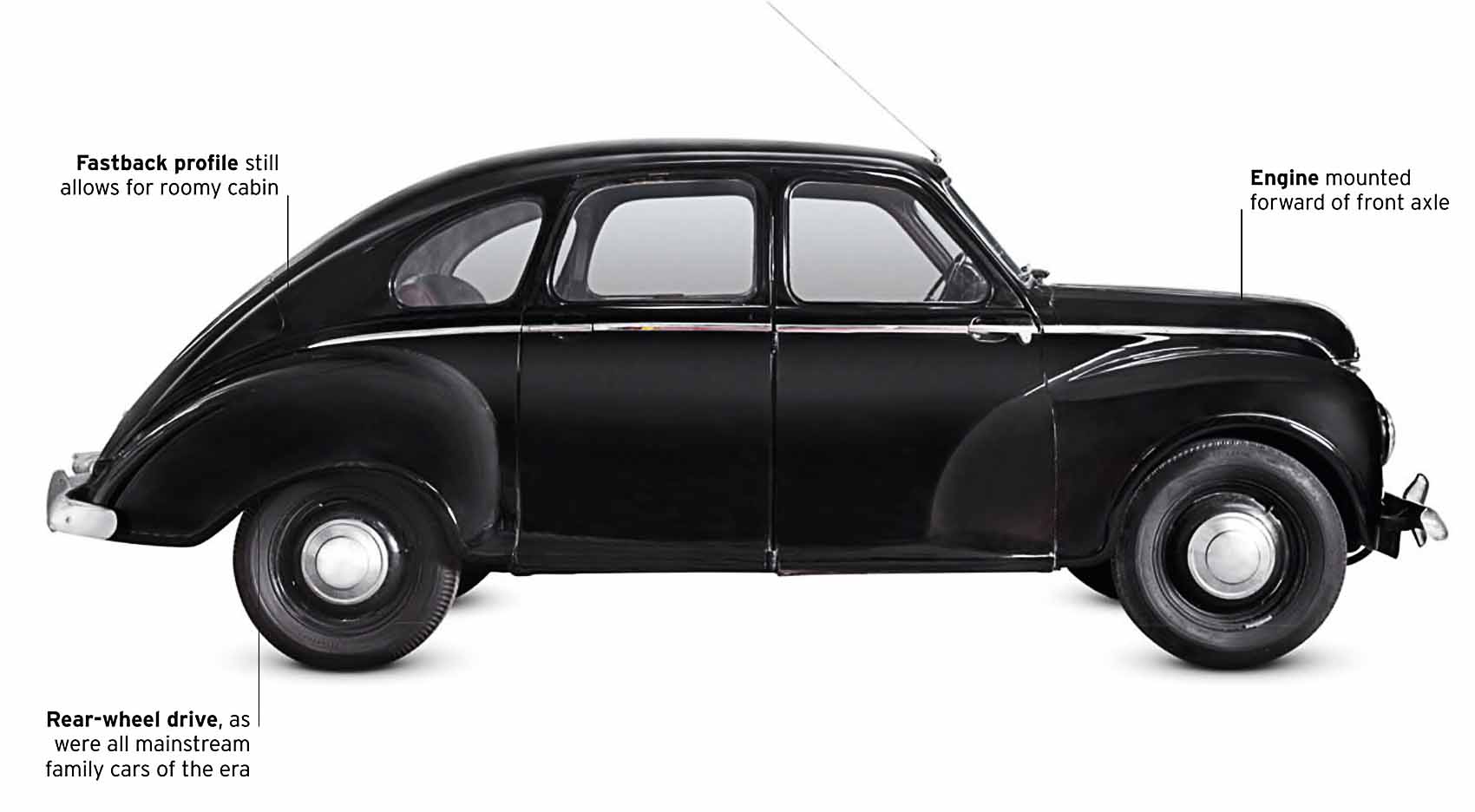
| Origin | UK |
| Engine | 1,486 cc, flat-four |
| Top speed | 78 mph (126 km/h) |
The small Yorkshire company, Jowett, created the Javelin in a brave attempt to build a postwar car that was almost entirely new. It had an advanced flat-four engine which resulted in a low centre of gravity, giving it excellent handling.
Tatra T600 Tatraplan, 1948
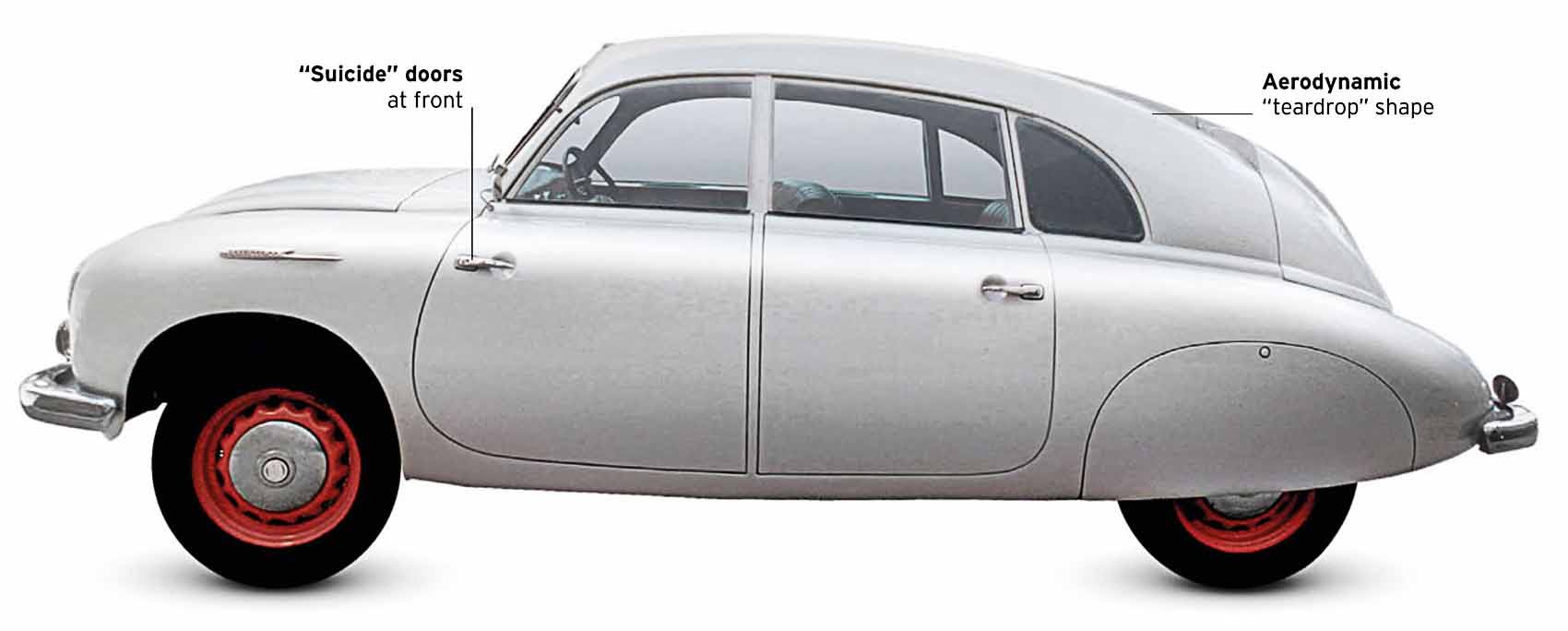
| Origin | Czechoslovakia |
| Engine | 1,952 cc, flat-four |
| Top speed | 80 mph (129 km/h) |
The brilliant T600 had a strikingly modern body with monocoque construction and a very low drag coefficient of just 0.32. Power came from an air-cooled, flat-four engine which was mounted at the rear, giving enough space inside to seat up to six people in comfort.
It is a quote. The Classic Car Book – The Definitive Visual History 2016




